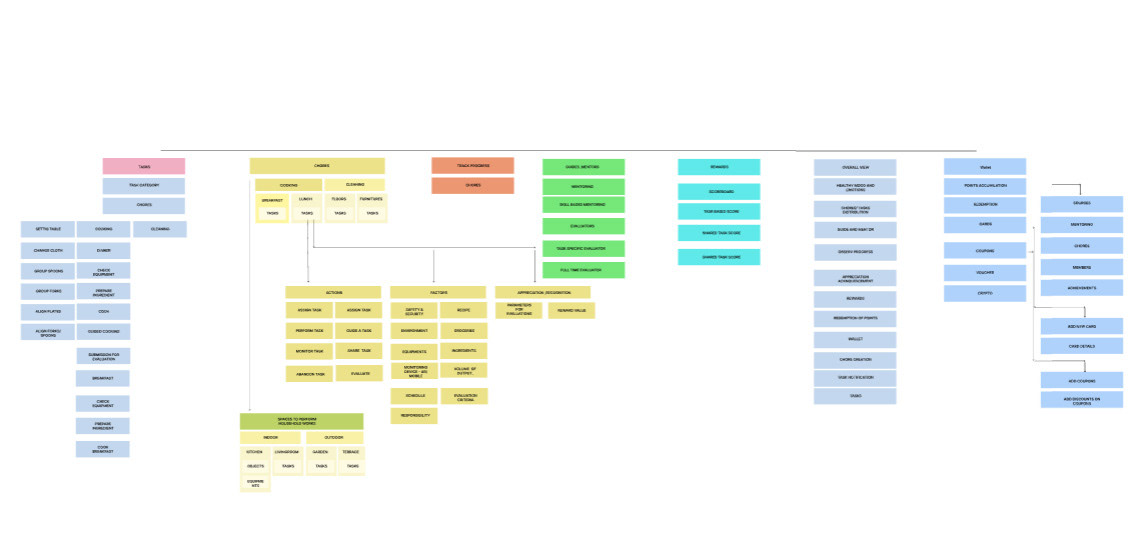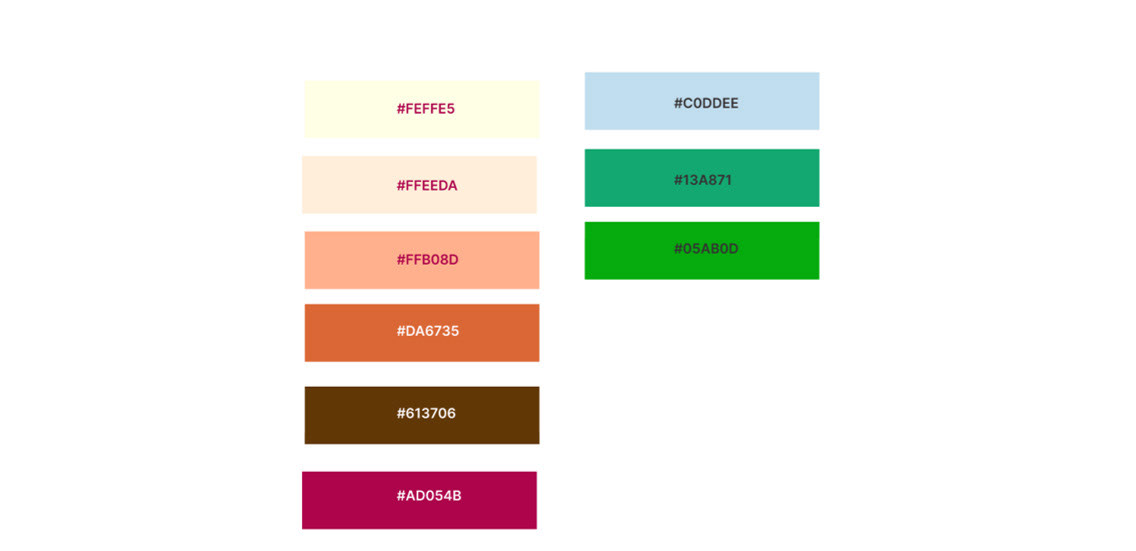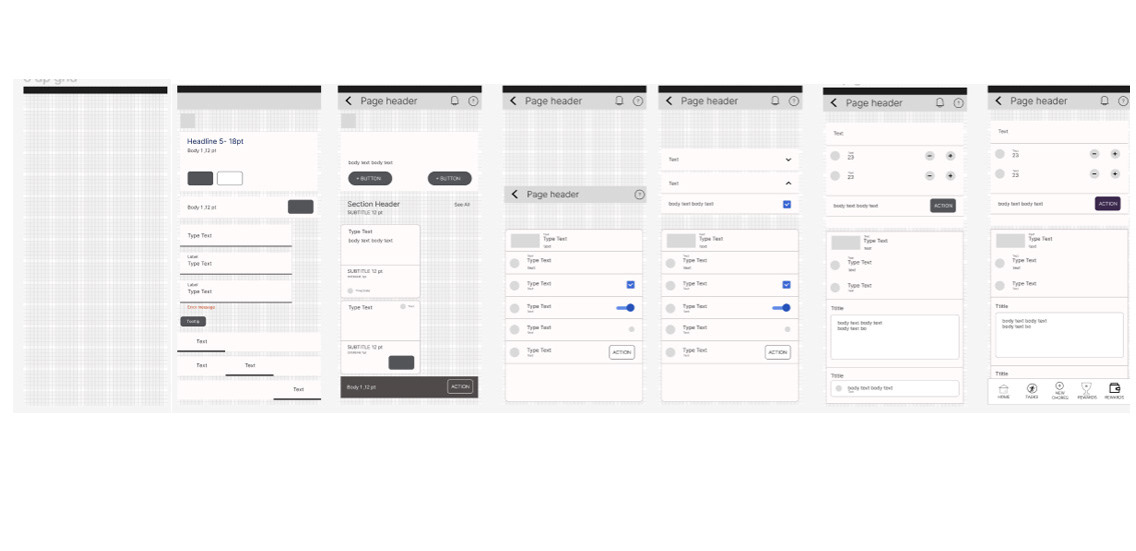
WHY HOUSE HOLD WORKS ? WHY MY INTELLECTUAL INCLINATION GAINED MOMENTUM TOWARDS THIS AREA ?
As a middle class Indian boy I grew up in a society where household works where looks down upon and taken for granted if someone proactively performs them. A gender biased role was curved out to perform chores and that loomed large as a social precipice that even today taking toll on thousands of happy marriages and spiling family life. As a designer, I believe my duty to society to strive always to make it a better place. This endeavor hopefully usher a ray of hope to all of us who want to see glass half full than glass half empty.
This app is designed to address a few fundamental problems that we face regarding sharing chores at home, be it in a shared living arrangement of a big family or in a nuclear family of just a husband and wife. The chores are performed for sake of it and performing them doesnt come with expectations of getting appreciations. Reward and recognition is one of the main area that is missing in daily household chores, rather some people consider it as punishment. Monitoring the chores is anoher area where my attention travelled and I discovered remedies through latest technologies and tools such as Augmented reality, Voice interaction devices that will collaboratively work with this app as one entity to help people feel relaxed and tension free while managing chores. In addition, theere are people who are experts in this field but never gets opportunity to teach and mentor people and in daily life its only immersive technology that can connect several people in one thread to come in guru and deciple relation. In this app it has occupied a speicial place in features.
Problem Statement
Asia ,Africa and even in Europe or America, an unequal distribution of housewold work creats a lot of pent up agony and frustration that spoils family life. Our life has become faster and no one has time to care for chores unless there is a fear of losing something or getting penalized. It is quite evident that a dwindling personal motivation to proactively perform chore in general has infected large part of society and it affects quality of life.
The main pronblem area of chores are performing safely, Tracking and appreciating the person who has performed it , has construed the premise of the solution.
Design Method
This project fostered the famous Design Thinking method that was invented in Stanford where the phases are iterative based on the desig nreuirements. There are total six steps in this framework and it fully justifies user needs keeping user in the centre of focus.

Empathize
In this phase the designer gets deeply engaged with user requirements ,problems and what they are looking for to fill gaps that exists. The literature review was the starting point as secondary study that revealed a lot of insights about the social problems. The then The primary research questions were formed based on the secondary resarch.

Secondary research
Lack of appreciation for household work We rarely observe that household works are appreciated. A tangible reward is desired, such as money or something consumable can motivate people. The gap is quite substantial and it demotivates any human who burns his or her energy, blood and sweat to perform these tasks ( Spector, 2019) Reward & Retribution Reward and punishment actively influence behavior and culture ( Shah,2023 ). Currently, there is no tangible reward system available that can appease the agony and frustration of the person who performs daily chores. There are many forms of punishments available in school(Schroeder, 2018), in army that are associated with household works such as cleaning surfaces, and mopping, for example; in army Toothbrush floor cleaning is very well known punishment( USARJ, 2011). Lack of financial benefits The current social system doesn’t provide any financial benefit for housewives or the women who perform daily chores. A financial compensation is one of the powerful motivational tool to encourage work (Kinsey.2020)
Surveys

Surveys to embark upon the research.
Insights
71.4 % of the participants are asians in a range of 22 to 36 year age who are mostly from Nuclear family.
Amongst household works Mostly people do cooking and cleaning
In their country most of the women do household work
They motivate themselves to do the chores they hate is by understanding that how they can make that work get done in easier manner
85.7% of our survey participants prefer to reward their kid to motivate
The type of assistance they expect from any tool to help household work is Do it yourself tutorials (42%) , tips and tricks (42%), scheduler (28%), game based learning (28%)
If one had to do household work the form of reward they expect are mostly cash in hand & rewards converted to digital currency.
Most of them had proclivity to use digital payment are as high as 85.7%
Preferred perks and bonus people expect for household work are gift vouchers, invitation to events, bonus.
Situational requirement is the main reason why people take up household work
They spend on an average 4 hours on daily chores
Mostly people don’t do chores because of time constrains and delegate work to servants
71.4 % of the participants are asians in a range of 22 to 36 year age who are mostly from Nuclear family.
Amongst household works Mostly people do cooking and cleaning
In their country most of the women do household work
They motivate themselves to do the chores they hate is by understanding that how they can make that work get done in easier manner
85.7% of our survey participants prefer to reward their kid to motivate
The type of assistance they expect from any tool to help household work is Do it yourself tutorials (42%) , tips and tricks (42%), scheduler (28%), game based learning (28%)
If one had to do household work the form of reward they expect are mostly cash in hand & rewards converted to digital currency.
Most of them had proclivity to use digital payment are as high as 85.7%
Preferred perks and bonus people expect for household work are gift vouchers, invitation to events, bonus.
Situational requirement is the main reason why people take up household work
They spend on an average 4 hours on daily chores
Mostly people don’t do chores because of time constrains and delegate work to servants
User interview and diary syudies

User research methods - User interview and Diary study
To explore deeper, the in-person user interviews
Affiinity mapping
The next phase was to analyze and synthesize the collected data, the raw data was cleansed and interpreted to set of codes and themes through affinity mapping and connections were established through the defined relations between the themes.

Empathy mapping
After analyzing the data and themes were created, it was time to explore more about user needs and goals ,pain points.

The key insights we got
Users and their environment
Users forfeit some amount of their high-priorities, enjoyments peace of mind to jump into
daily chores because inherently they are responsible for keeping house clean, cook
good food but undelying pain, fatigue, fear makes the experience gaps.
Users forfeit some amount of their high-priorities, enjoyments peace of mind to jump into
daily chores because inherently they are responsible for keeping house clean, cook
good food but undelying pain, fatigue, fear makes the experience gaps.
What they do
jobs- chores such a cooking cleaning gardening, laundry , plan coordinate
monitoring, delegating etc and they need to do it differently , effortlessly, in short
time without inviting hazards
Decisions- they need to take in the area of money, time effort and planning
Success- overall happy married life, earning respect and cherish rewards
jobs- chores such a cooking cleaning gardening, laundry , plan coordinate
monitoring, delegating etc and they need to do it differently , effortlessly, in short
time without inviting hazards
Decisions- they need to take in the area of money, time effort and planning
Success- overall happy married life, earning respect and cherish rewards
Their goals- hope and dreams like financial gains, social respect, peace of mind
Their Need-
An efficient smart assistant who can take care of their worries regardin to the
daily chores, so that they can enjoy other aspects of life
An efficient smart assistant who can take care of their worries regardin to the
daily chores, so that they can enjoy other aspects of life
What they See-
In market they see different avenues of getting assistance
In environment -They see commitment pressure from core set of responsibilities,
they see if delegations don’t work they have to jump in, forfeit their peace of mind
In market they see different avenues of getting assistance
In environment -They see commitment pressure from core set of responsibilities,
they see if delegations don’t work they have to jump in, forfeit their peace of mind
What they say-
The amount of encouragement they get from people around is not enough
People don’t eulogize very often but judge and criticize at the drop of hat
The amount of encouragement they get from people around is not enough
People don’t eulogize very often but judge and criticize at the drop of hat
Their Pain points-
safety, planning , unguided chores ,mistakes, scarce appreciation & rewards
safety, planning , unguided chores ,mistakes, scarce appreciation & rewards
User Persona and user journey map
this helped immensely to share up the narrative and understand the whole perspectives of user requirements scenario by scenario analyzing and that helped to built new level user journey map.

story board

4W s & 5 WHYs
here is an interesting way of understanding user need and good way to contextualize experience
POV statement
POV statement


How Might We questions

Rapid idea generations

Competitive analysis
Three apps were compared from their features ,ranking and other important aspects to understand the market and how our app needs to stand out in the market with innovative features.
CHAP is mainly built to share household chores between family members ,friends roommates.
HOME tasker is mainly built to help people organize household cleaning schedule
Sweepy is mainly built to help people organize household cleaning schedule

Site map


Paper prototype
A popular tool called Marvel pop was very useful to portray the paper prototype. there designer can build ui or upload sketch and connect screens to explorative evaluation

Explorative test
The paper proto was tested with some people who could represent users and their interactions and comments helped shape the app more
Colour pallete


design system - UI components


Photographs

Fonts

Accessibility compliance for all colour , graphic elements and texts

MId fi prototype

Visual design

Figma prototype
THANK YOU
